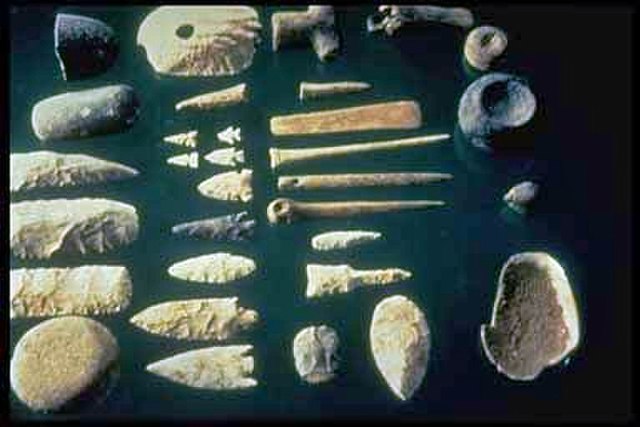In archaeology, ground stone is a category of stone tool formed by the grinding of a coarse-grained tool stone, either purposely or incidentally. Ground stone tools are usually made of basalt, rhyolite, granite, or other cryptocrystalline and igneous stones whose coarse structure makes them ideal for grinding other materials, including plants and other stones.
An array of Neolithic artifacts, including bracelets, axe heads, chisels, and polishing tools. Neolithic stone implements are by definition ground stone and, except for specialty items, not chipped.
A Neolithic ground stone.
Traditional grinding stone used for making chutney, dosa batter and idli batter, in India today.
A stone tool is, in the most general sense, any tool made either partially or entirely out of stone. Although stone tool-dependent societies and cultures still exist today, most stone tools are associated with prehistoric cultures that have become extinct. Archaeologists often study such prehistoric societies, and refer to the study of stone tools as lithic analysis. Ethnoarchaeology has been a valuable research field in order to further the understanding and cultural implications of stone tool use and manufacture.
A selection of prehistoric stone tools
A biface (trihedral) from Amar Merdeg, Zagros foothills, Lower Paleolithic, National Museum of Iran
Clovis points from the Rummells-Maske Cache Site, Iowa
An array of Neolithic artifacts, including bracelets, axe heads, chisels, and polishing tools.






